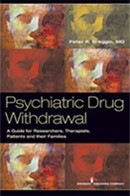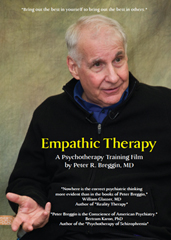Alert 67: MORE HUGE ECT NEWS
After decades of denial, the largest manufacturer of electroconvulsive treatment machines has just admitted for the first time that a risk of “brain damage” is associated with ECT. The unprecedented admission by Somatics, Inc., the manufacturer of Thymatron, came in the form of a Regulatory Update just posted on its website in October 2018.
Here is the quote from Somatics October 2018 update:
“ECT may result in anterograde or retrograde amnesia. Such post-treatment amnesia typically dissipates over time; however, incomplete recovery is possible. In rare cases, patients may experience permanent memory loss or permanent brain damage.”
Admitting that they are aware that ECT can now cause “brain damage” changes the landscape in which lawsuits can now be brought against all ECT manufacturers, including MECTA, which is the only other primary company marketing ECT machines for sale in North America. The disclosure, never before acknowledged, now allows ECT patients suffering from brain damage from ECT to now be in a stronger position to seek remedies for their unwarned injuries caused by these manufacturers’ devices.
I documented that ECT causes brain damage in 1979 when I published the first and still only medical textbook critical of ECT, Electroconvulsive Therapy: Its Brain-Disabling Effects. My textbook and my more recent scientific publications can be retrieved for free from my ECT Resource Center (www.123ECT.com). The site also contains dozens of additional scientific articles that confirm that ECT can cause devastating cognitive losses, including severe memory loss covering many years and permanent brain damage.
I have been working closely with California attorney David M. Karen with the DK Law Group in California on pending lawsuits against ECT manufacturers as his expert on cognitive dysfunction and permanent brain damage caused by the traumatic ECT treatment. However, I cannot yet discuss my specific role in any ongoing litigation. I will report unfolding events in these Frequent Alerts, so that you will be first to know.
In the meanwhile, please see my Alert 63: 10/21/18 : HUGE BREAKTHROUGH IN LAWSUITS AGAINST ELECTROCONVULSIVE THERAPY (ECT) MANUFACTURERS. It describes my role as a medical expert for attorney David Karen in a recent case against an ECT manufacturer. In that unnamed case, the judge made a landmark decision that there was reasonable and sufficient evidence for ECT-induced cognitive dysfunction, memory loss and brain damage to allow the jury to hear the evidence in trial.
In its recent Regulatory Update, Somatics, Inc. also confirmed the conclusions of the American Psychiatric Association’s 2001 Task Force Report, Second Edition:
It is essential that doctors planning to use the Thymatron® System IV read and follow the warnings and recommendations of the Task Force Report of the American Psychiatric Association as set forth in “The Practice of Electroconvulsive Therapy” (APA, 2001), which states, in part, that “A small minority of patients treated with ECT later report devastating cognitive consequences. Patients may indicate that they have dense amnesia extending far back into the past for events of personal significance or that broad as of cognitive function are so impaired that the patients are no longer able to engage in former occupations…in some patient self-reports of profound ECT-induced deficits may reflect objective loss of function…In rare cases, ECT may result in a dense and persistent retrograde amnesia extending to years… [“as of” is a misprint and should read “aspects of”, p. 72 of the report]
Both the APA and Somatics, Inc maintain that the most serious catastrophes are “rare;” but repeated electrical trauma and severe convulsions accompanied by coma, convulsion, and subsequent confusion or delirium qualify as severe traumatic brain injury (TBI) and will inevitably leave nearly all or all victims with serious lasting effects.
In addition to admitting that ECT causes “cognitive loss” and “brain damage,” it was a major advance when Somatics, Inc. also confirmed the APA warnings quoted above, including the potential for “devastating cognitive consequences,” “amnesia extending far back into the past for events of personal significance,” patient impairments so severe that that they “are no longer able to engage in former occupations,” that “some patient self-reports of profound ECT-induced deficits may reflect objective loss of function,” and that “in rare cases, ECT may result in a dense and persistent retrograde amnesia extending to years [before the treatment].”
By warning doctors who plan to use their machines to follow the warnings of the APA ECT task force, they put doctors on notice that they will have legal and ethical responsibility for failing to do so. This could prove important in malpractice suits against ECT doctors who fail to take into account or to fully inform patients and their families about the array of potentially catastrophic adverse effects.
For the latest information on ECT and other psychiatric matters, sign up for the free Frequent Alerts on my website, www.breggin.com.
Peter R. Breggin, MD






